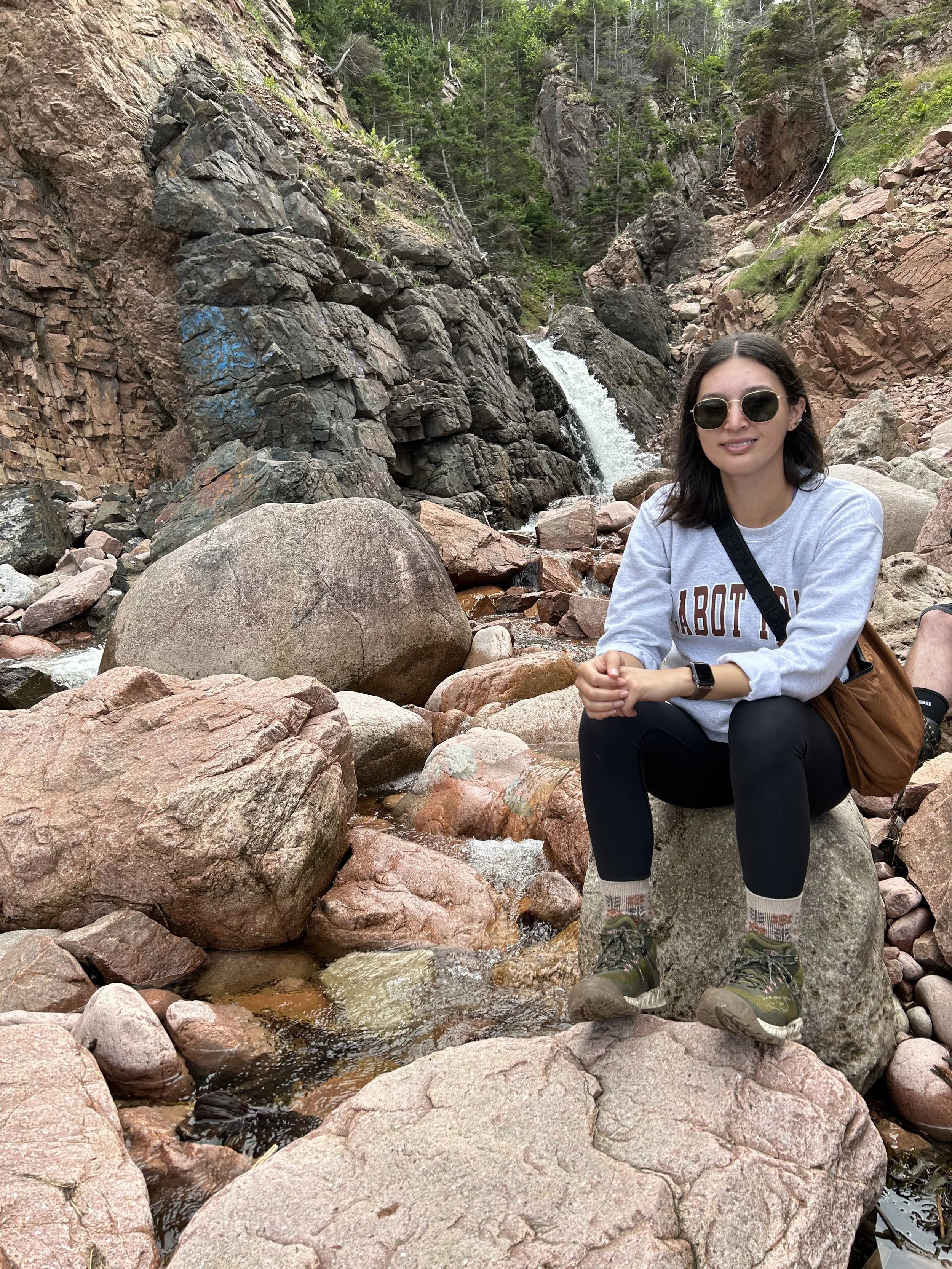Shae Denny is the Aquatics Program Manager for the Unama’ki Institute of Natural Resources (UINR) and is a partner on the Apoqnmatulti’k project.
Where did you grow up?
I grew up in the Eskasoni First Nation and I have lived here my entire life.
Tell me about your relationship with the natural world.
I am deeply inspired by the natural world. It’s always had a place in my heart. My Mi’kmaw culture is deeply entwined with nature, so I have always felt that connection within me. I honor and respect the natural world every day.
What is a typical day like in your role?
I oversee a team of three people, so I check in regularly to see how I can support them. Outside of my team, I work on building and maintaining relationships with current and new partners. Other days, I participate in field work, mainly around rivers and the Bras d’Or Lakes. This involves collaborating with Mi'kmaw fishermen to determine areas that may need closer monitoring, measuring different parameters to assess river health, and tagging fish to help track the movements of culturally important species.
Why do you think animal tracking is important?
Animal tracking is a method to learn more about a species, and is especially important for declining species, such as Plamu (Atlantic Salmon) and Katew (American Eel). For the Unama'ki Institute of Natural Resources, tracking is not taken lightly because you are tampering with the animal. Fish tagging is only done if Mi’kmaw harvesters deem it necessary and we always try to follow methods that cause the least amount of harm possible.
How is Apoqnmatulti’k different from other projects you’ve participated in?
Apoqnmatulti’k is rooted in multiple knowledge systems—Mi’kmaw knowledge, local knowledge, and western scientific knowledge are all woven together. The project is guided by Etuaptmumk, or Two-Eyed Seeing, which is a term coined by Mi’kmaw Elder Dr. Albert Marshall. Through this approach, you learn to see from one eye with the strength of Indigenous ways of knowing, and from the other eye with the strength of western ways of knowing. Etuaptmumk implements all forms of knowledge and recognizes that each perspective is equally important. I think Apoqnmatulti’k is an exemplary model for other projects and organizations to learn from.
Why do you think that it is important to weave together different knowledge systems?
Adhering to only a single knowledge system is limiting—it only shows part of the picture. Western knowledge, for example, does not give weight to spirituality and intuition, which are very important aspects of Indigenous knowledge. We all live on Indigenous land, so it’s important to incorporate our perspective as we have a sense of the natural world that western science can’t see.
What does Apoqnmatulti’k mean to you?
Apoqnmatulti’k is an excellent example of how different knowledge systems can come together and be woven into success. It is truly reflective of its title, meaning we all help each other. We are always learning something new from both knowledge systems—we grow together—and that is what means the most to me.
What have you enjoyed the most about your involvement with Apoqnmatulti’k?
I enjoy meeting the people behind Apoqnmatulti’k. Everyone brings something valuable to the table, and I am honored to be a part of it—I hope we remain connected and continue to collaborate beyond the project.
What do you like to do outside of work?
I really enjoy being outdoors—hiking, camping, yoga, exploring with my dog, and anything around the water! I enjoy my indoor hobbies equally I do my outdoor hobbies.

